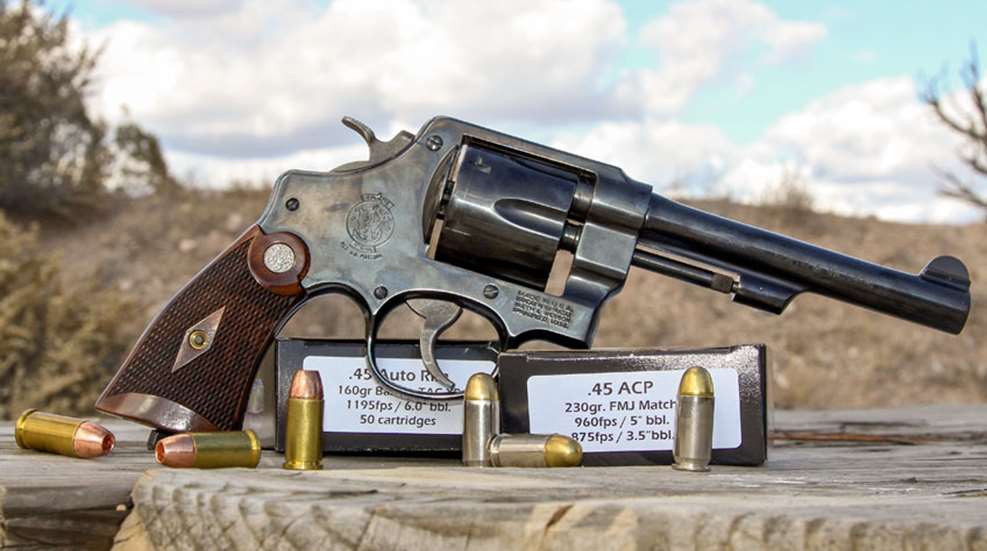
Q: If the .45 Auto Rim cartridge doesn’t require the use of a cumbersome half-moon clip in order to be ejected from the Model 1917 Colt and Smith & Wesson revolvers, why wasn’t it issued to our troops armed with M1917 revolvers during World War II?
A: The answer can be summed up in one word: logistics. Having two cartridges of the same caliber that could not alternately function in both the U.S. M1911A1 semi-automatic and the S&W and Colt M1917 revolvers would have been a recipe for disaster.
This situation first surfaced in World War I, when M1911s couldn’t be produced fast enough to meet demand. Consequently, the Smith & Wesson Second Model Hand Ejector and the Colt New Service with factory chamberings in .45 Colt were drafted into service.
The only problem was that even with minor cylinder modifications to accommodate the .45 ACP round, the rimless case of this cartridge provided nothing for the extractor of the revolvers to engage, which meant the spent .45 ACP cases would have to be punched out individually, a time-consuming endeavor, especially during the rigors of battlefield conditions.
As covered in Bruce Canfield’s “Valuable Service: The U.S. Model Of 1917 Revolvers," that dilemma was solved when Smith & Wesson came up with a half-moon metal clip that held three rounds, with two clips being required to load six cartridges. (They were supplied for use in Colt 1917 revolvers as well.) With the .45 ACP rounds affixed to the half-moon clips, they ended up being very effective speed loaders.
After the war, thousands of surplus M1917 revolvers were sold to civilians. Complaints from shooters about the inconvenience of having to use half-moon clips resulted in the Peters Cartridge Co. introducing the .45 Auto Rim cartridge in 1920—a rimmed version of the .45 ACP that did not require half-moon clips to facilitate ejection.
At the outbreak of World War II, history repeated itself, with Colt and S&W Model 1917s again being drafted into service. But although the .45 Auto Rim cartridge was available, it was much more convenient to simply use the .45 ACP in both the Model 1917 revolvers and the U.S. M1911A1, to prevent any mix-ups by G.I.s on the front lines.





































